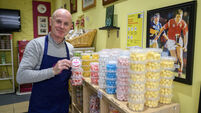Bernard O'Shea: Five things I've learned about açai bowls

Bernard O'Shea: "Ordering an açai bowl declares internally to your refined self: 'I care about wellness, and I'm willing to pay for it'."
My first encounter with an açai bowl occurred not in Brazil, where the berries originate, but in a café that seemed to have been decorated entirely by Instagram. You know the type — white subway tiles, plants in every corner, and a wall mural of wings you’re meant to pose in front of. The menu listed “Açai Bowl €8.50.” I stared at the word for a full minute before placing my order. Was it “ack-eye”? “ah-kay”? “a-kigh”? I considered just pointing and saying, “That purple one.” Eventually, I whispered something that sounded like a sneeze, and the young staff member nodded with pity.







